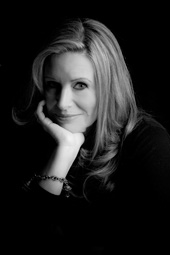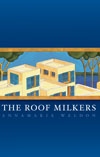 |
|||||||
About the Writer |
|||||||
Migrating to Australia in her mid-thirties was unforeseen. The move from a historic, diminutive island to this ancient, vast continent reinforced her earlier attunements to place and to dislocation. Her writing is grounded in a love of country and appreciation for the many languages we have for landscape. These include memoir, the wisdom of traditional cultures and natural sciences. More recently, she has been exploring nature photography. In 2008 Annamaria’s poetry collection, The Roof Milkers, was published in Australia by Sunline Press. She won the Tom Collins Poetry Prize 2010 for The memory of earth and in 2011, her essay Threshold Country was awarded The Nature Conservancy Australia’s inaugural Prize for Nature Writing. |
|||||||
|
|||||||
These publications followed a decision made in 1998, when after twenty years working in journalism, public relations and administration, Annamaria joined the dynamic writing group Out of The Asylum. Affectionately known as OOTA, it continues to meet weekly at Fremantle Arts Centre. There and at the Fellowship of Australian Writers W.A (FAWWA) of Tom Collins House in Swanbourne, mentors and colleagues helped focus her transition to creative writer. As a journalist, she had worked in Perth and overseas. Now, Annamaria writes at home near the port city of Fremantle and on frequent visits to Yalgorup National Park, a wild, endangered landscape between Mandurah and Bunbury, 100k south of Fremantle. On this pinch of land between Harvey Estuary and the Indian Ocean, Ramsar-listed wetlands are folded between dunes. The treasure of Yalgorup’s lake system is Lake Clifton, with its rare and protected ‘living fossils’, the thrombolites. Annamaria’s relationship with this place developed during her 2009-2010 Artist Residency with Adaptation at SymbioticA, The University of Western Australia and is central to her work-in-process, a landscape journal of photographs, poems and memoir. While at Adaptation, she collaborated with naturalist Laurie Smith on Sharing the Edge, a wetlands creative research and community outreach project. This fed into a series of 20 writing workshops she developed and delivered in Perth, Fremantle, Mandurah and Denmark during 2010, sponsored by writingWA, City of Mandurah and the Stretch Arts and Culture Festival, Country Arts Network W.A., Community First International, Poets Union and Denmark Arts. Since The Roof Milkers was published in 2008, Annamaria has been invited to primary and high schools, libraries, tertiary institutions and a range of writers’ and social groups to give poetry readings and talks. The Adaptation residency broadened the scope of her writing and led to involvement with nature seminars, photography, storytelling and art education in regional communities. This website comes from such opportunities and encounters, in response to requests by readers or writing students for references to Annamaria’s work, and as part of the broader conversation which continues ‘without ceasing’ between people and places. |
|||||||

